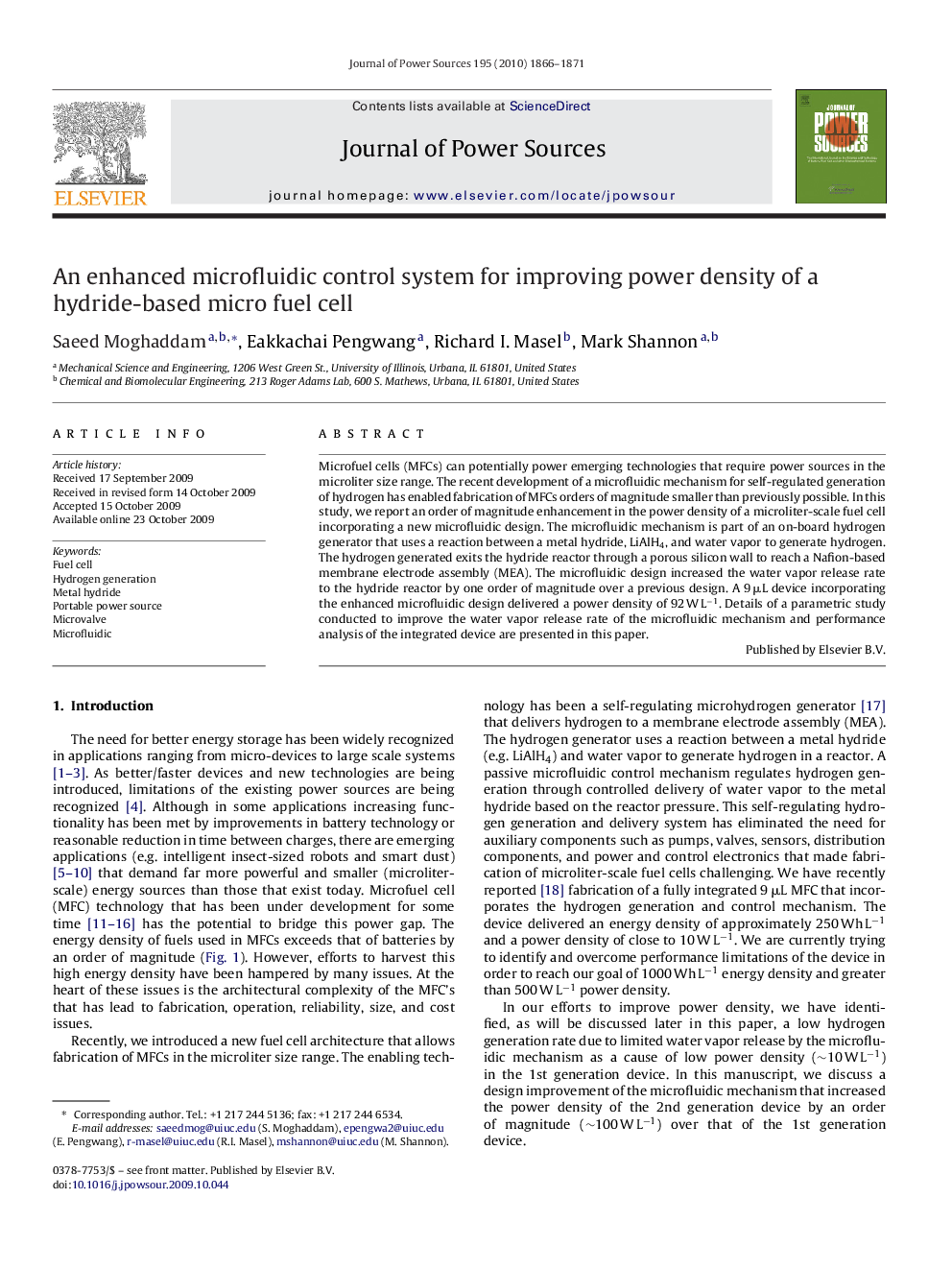| Article ID | Journal | Published Year | Pages | File Type |
|---|---|---|---|---|
| 1289161 | Journal of Power Sources | 2010 | 6 Pages |
Microfuel cells (MFCs) can potentially power emerging technologies that require power sources in the microliter size range. The recent development of a microfluidic mechanism for self-regulated generation of hydrogen has enabled fabrication of MFCs orders of magnitude smaller than previously possible. In this study, we report an order of magnitude enhancement in the power density of a microliter-scale fuel cell incorporating a new microfluidic design. The microfluidic mechanism is part of an on-board hydrogen generator that uses a reaction between a metal hydride, LiAlH4, and water vapor to generate hydrogen. The hydrogen generated exits the hydride reactor through a porous silicon wall to reach a Nafion-based membrane electrode assembly (MEA). The microfluidic design increased the water vapor release rate to the hydride reactor by one order of magnitude over a previous design. A 9 μL device incorporating the enhanced microfluidic design delivered a power density of 92 W L−1. Details of a parametric study conducted to improve the water vapor release rate of the microfluidic mechanism and performance analysis of the integrated device are presented in this paper.
